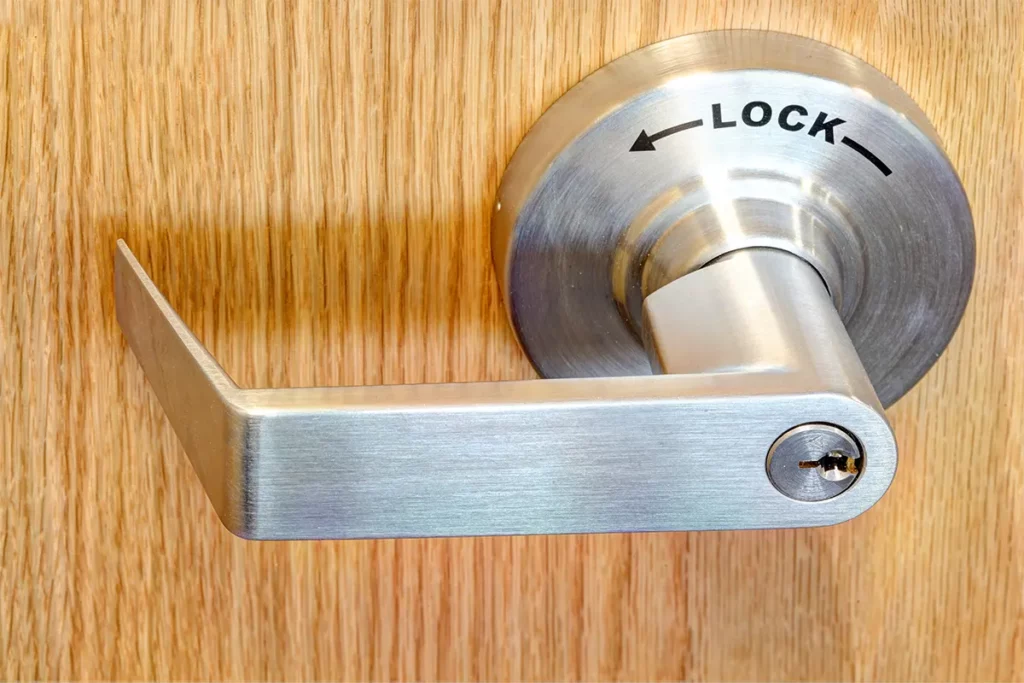ADA Door Handle Requirements

Disabled people face this regularly that they cannot even cross your door, which should not happen, and we must take responsibility for their well-being.
Considering such elements and discrimination against the disabled, the US government established ADA, i.e., Americans with Disabilities Act, in 1990. The Act included rights for disabled individuals.
What is the purpose of ADA requirements?
The ADA guidelines were established in 1990 and became effective in January 2009. Since then, business organizations, commercials, government programs, and public accommodations have complied with ADA standards. These guidelines consist of five titles/sections, which are:
- Employment
- State and Local Government
- Public accommodations
- Telecommunications
- Miscellaneous provisions
Under Title III (Public accommodation), private and government-owned accommodations must comply with ADA Guidelines. One such part of it includes guidelines for installing doors at public accommodations.
What are ADA door handle requirements?
Suppose we consider that the width of the door is ADA compliant and wide enough for a disabled person to cross. It is then essential to ensure that the person can reach the door's handles.
ADA Guidelines for operable parts fall under Section 309.4.
The ADA information line suggests that pulling open the doors should be easy for the disabled and not require tight grasping, pinching, or twisting the armed fist.
Here are ADA accessibility guidelines for operable parts that you must know:
Height of handle according to ADA Guidelines
The minimum height of door handles from the finished floor or ground length should be 34 inches, and the maximum should be 48 inches for an accessible door passage.
It includes some exceptions like pre-existing doors and doors for spas, pools, and hot tubs.
The intensity of force required
According to ADA compliance, the maximum force allowable to open the door should be 5 pounds or even less.
The force that one applies refers to the pressure on the entire door opening and not just the handle. The doors include interior hinged doors, sliding doors, and folding doors.
The requirement of the force theory does not apply here -
Retract latch bolts or release other operating devices that hold the door in a closed position.
One hand functioning doors
The doors should be functional with a single hand, and the need to grasp door hardware with both hands should not be there.
ADA recommends U-shaped handles, push-type mechanisms, and lever-operated mechanisms because they are easy to pull single-handedly.
The mechanism should be easily accessible with a closed fist and avoid twisting the wrist.
Handles should not require tight grasping
The ideal door hardware should not demand- The urge of grasping, pinching, or twisting of the wrist.
Doors that open by closed fist or loose grip accommodates are recommended.
Ada Guidelines: Basic ADA requirements
It includes operating hardware as well and other devices.
Door openings Considerations
The door opening should be at at least a 90-degree angle.
A minimum door opening force should be required. The ADA guidelines ensure that the doors are easy to open and the disabled get enough space to move through them.
It should take a maximum of 3 seconds to close as instructed by the appropriate administrative authority. The door should connect with wheelchair ramps along with stairs.
Clear opening and appropriate clear width
WIdth requirements follow up with "clear opening," which means that the full width of the swinging doors should be under ADA guidelines.
The clear width for the opening of swinging doors should be minimum of 32 inches, and for 24 inches swinging doors, the clear width should be 36 inches.
The push side door should have a smooth surface, and it should be within 10 inches from the finished floor.
Parts creating horizontal or vertical joints towards push side doors should be 1/16 inches.
Closing speed
The open door at 90 degrees should take a minimum of 5 seconds to close. An open door with spring hinges should take more than 3 seconds to close from an angle of 7O degrees (open position) concerning the door's leading edge.
Maneuvering clearances
Maneuvering clearances have a complete set of a table in ADA. One such example will explain it:
If you reach the face of the door from the front, a minimum clearance gap of 48 inches should be there, considering that the person is standing in the same direction.
Sidelights
If the door has sidelights for light transmission, at least one of them should be less than 43 inches from the finished door. Moreover, there is no need to install them if the light falls 66 inches from the floor length.
Thresholds
Thresholds should not be more than 3/4 inches in the case of exterior sliding doors and 1/2 inches for other doors like exterior hinged doors.
FAQ
What are the ADA door requirements for fire doors?
The minimum opening force allowable for fire exit doors should not be more than 15 lbs when in the closed position. Furthermore, the minimum force to bring the door in motion should not be more than 30lbs.
Fire exit doors should follow the minimum width requirement for easy passage and have sufficient space to hold the handle.
What is the ADA accessibility guideline for revolving doors?
The face of the door does not have enough width that a disabled can pass even if there is no requirement to make the door open.
According to ADA guidelines, the revolving door should not be the only door to the entrance and exit in the entire unit. A building with revolving doors should have more than one door that can be operated by the disabled.
What are the ADA guidelines for door handles?
Door handles come under Section 309.4 of the ADA, including operable parts. The clear width of the door should be 32 inches minimum.
There should be a clear opening in the front face of the door, and the handle should be at least 48 inches from the floor or ground.
It should be easily accessible to the disabled, and the maximum force pertains to open the door should not be more than 5 pounds.
In the case of a hinged door or swinging doors, adequate space should be there in the front to operate the handle. U-shaped handles are preferred as they don't require much force.
Conclusion
The right for every citizen to move around freely makes such laws essential in bringing about equality. This law implements parity amongst disabled citizens, regardless of caste, race, gender, or nation.
Accessible doors and handles follow guidelines in the Act. It's easy for the disabled to operate the door following changes in the doors working. Although changes in the doors after the Act are nuanced for us, for disabled citizens, it makes a big difference.
There are more guidelines and follow-up rules in the Americans with Disabilities Act. You can check on the justice department's ADA home page for more information.
Where to search for a professional?

In case you are searching for reliable and quick locksmith services around, then ASAP locksmith Dallas TX is all you need. We provide 24-hour emergency locksmith services for residential, automotive, and commercials. All you have to do is call us at 469-208-0041 and know more about discounts and offers.
